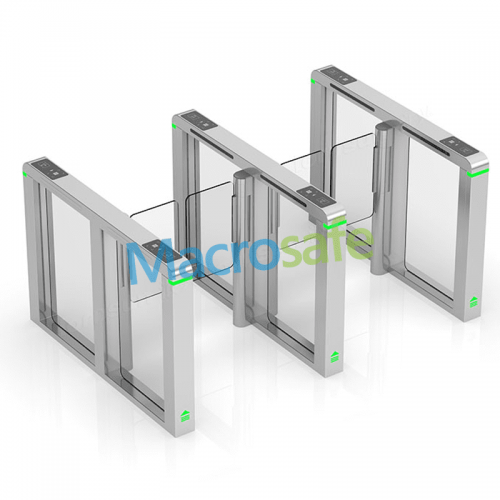As technology continues to advance rapidly, access control solutions are evolving to meet the ever-changing security needs of modern environments. Speed gates, also known as turnstiles, have undergone significant advancements in recent years, and their future holds even more exciting possibilities. This article explores the trends and innovations expected in speed gate technology, providing insights into the future of access control.
- Biometrics and Facial Recognition:
Biometric authentication methods, such as fingerprint or iris scanning, have gained popularity in recent years due to their high accuracy and security. In the future, speed gates are likely to incorporate more advanced biometric technologies, enabling seamless and secure access control. Facial recognition, in particular, is expected to become more prevalent, allowing individuals to gain entry by simply looking into a camera. These advancements will enhance convenience and security, reducing the reliance on traditional access cards or credentials.
- Artificial Intelligence and Machine Learning:
As speed gates become more integrated with other security systems, artificial intelligence (AI) and machine learning technologies will play a vital role. AI-powered algorithms can analyze and process large amounts of data, allowing speed gates to identify patterns, detect anomalies, and respond to potential security risks in real-time. Machine learning algorithms can also continuously improve access control systems by learning from past data and adapting to evolving threats. These technologies will significantly enhance the accuracy and effectiveness of speed gates in the future.
- Internet of Things (IoT) Connectivity:
The integration of speed gates with IoT technology will enable seamless connectivity between various security devices and systems. IoT-enabled speed gates can communicate with access control systems, surveillance cameras, alarm systems, and other devices, creating a cohesive and interconnected security ecosystem. This connectivity will allow for centralized monitoring, real-time data sharing, and intelligent decision-making, enhancing the overall security and efficiency of access control systems.
- Energy Efficiency and Sustainability:
With growing concerns over energy consumption and environmental impact, the future of speed gates will focus on energy efficiency and sustainability. Speed gates will be designed with smart sensors and detection systems that can optimize power usage based on real-time footfall. They may also incorporate energy-saving features such as low-power standby modes and LED lighting. By prioritizing energy efficiency, speed gates can make substantial contributions to building sustainability efforts.
- Enhanced User Experience:
The future of speed gate will place a strong emphasis on user experience and convenience. User-friendly interfaces, intuitive touch screens, and voice commands will make accessing secure areas effortless. Speed gates may incorporate smartphone apps for seamless mobile credential management, eliminating the need for physical access cards. Additionally, features like automated bag detection and hands-free authentication will further enhance convenience for users while maintaining high levels of security.
- Integration with Health and Safety Measures:
In response to global events such as the COVID-19 pandemic, the future of speed gates will likely involve the integration of health and safety measures for individuals. This can include contactless temperature scanning, face mask detection, and hand sanitizer dispensers integrated within the speed gate system. By combining access control with health monitoring, speed gates can contribute to a safer and healthier environment for users.
- Advanced Analytics for Crowd Management:
Speed gate in the future will be equipped with advanced analytics capabilities to facilitate efficient crowd management. Real-time monitoring of crowd density, occupancy levels, and flow patterns will provide valuable insights to security personnel. This data can help optimize security resources, identify bottlenecks, and improve overall crowd control. Predictive analytics models may also be employed to anticipate and preempt potential security risks or congestion before they occur.
Conclusion:
The future of speed gates is exciting, with continued advancements poised to revolutionize access control technology. Biometrics, AI, IoT connectivity, energy efficiency, enhanced user experience, integration with health and safety measures, and advanced analytics will shape the evolution of speed gate systems. As organizations prioritize security, convenience, and sustainability, speed gates will play an increasingly crucial role in access control for a wide range of environments, from transportation hubs to corporate offices. Embracing these trends will ensure that speed gates remain at the forefront of access control technology, providing efficient and secure passage for individuals in the years to come.


